Slight Covid uptick in older school children in England
- Published
- comments
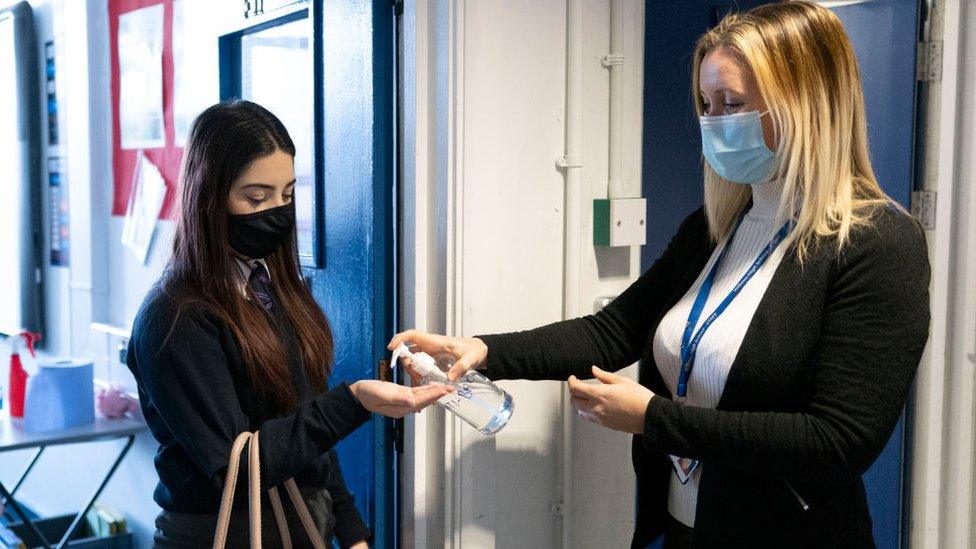
Coronavirus infection levels in secondary school-age children have risen slightly in England, according to the Office for National Statistics.
Tests carried out during the second week back at school, ending 20 March, found an increase in 11-16 year olds.
But infections fell in older teenagers and young people, the ONS estimates.
Overall, the percentage of people testing positive has levelled off in England, Wales and Northern Ireland, and risen in Scotland.
On Friday, the UK reported another 6,187 confirmed cases, external - an increase of 1,385 on last Friday's figure, but a decrease of 210 from Thursday.
Another 70 deaths within 28 days of a positive Covid test were also reported - a decrease of 31 from last week, but an increase of seven from Thursday.

According to the ONS analysis, external, which tests a random sample of adults and children in the community, infections remain at a low level after falling steeply since January.
It estimates that in the week up to 20 March:
1 in 340 people in England had coronavirus, or 0.3%
1 in 450 in Wales, or 0.2%
1 in 320 in Northern Ireland, or 0.3%
1 in 240 in Scotland, or 0.4%
At the height of the winter peak, the percentage testing positive was around 2% in most of the UK.
This week's figures from the ONS also reflect the effect of schools re-opening in England on 8 March on infection levels, which were always expected to rise when children, staff and parents started mixing again in large numbers.
The findings show a slight rise in children testing positive in years 7-11, from 0.31% the previous week to 0.43% this week.
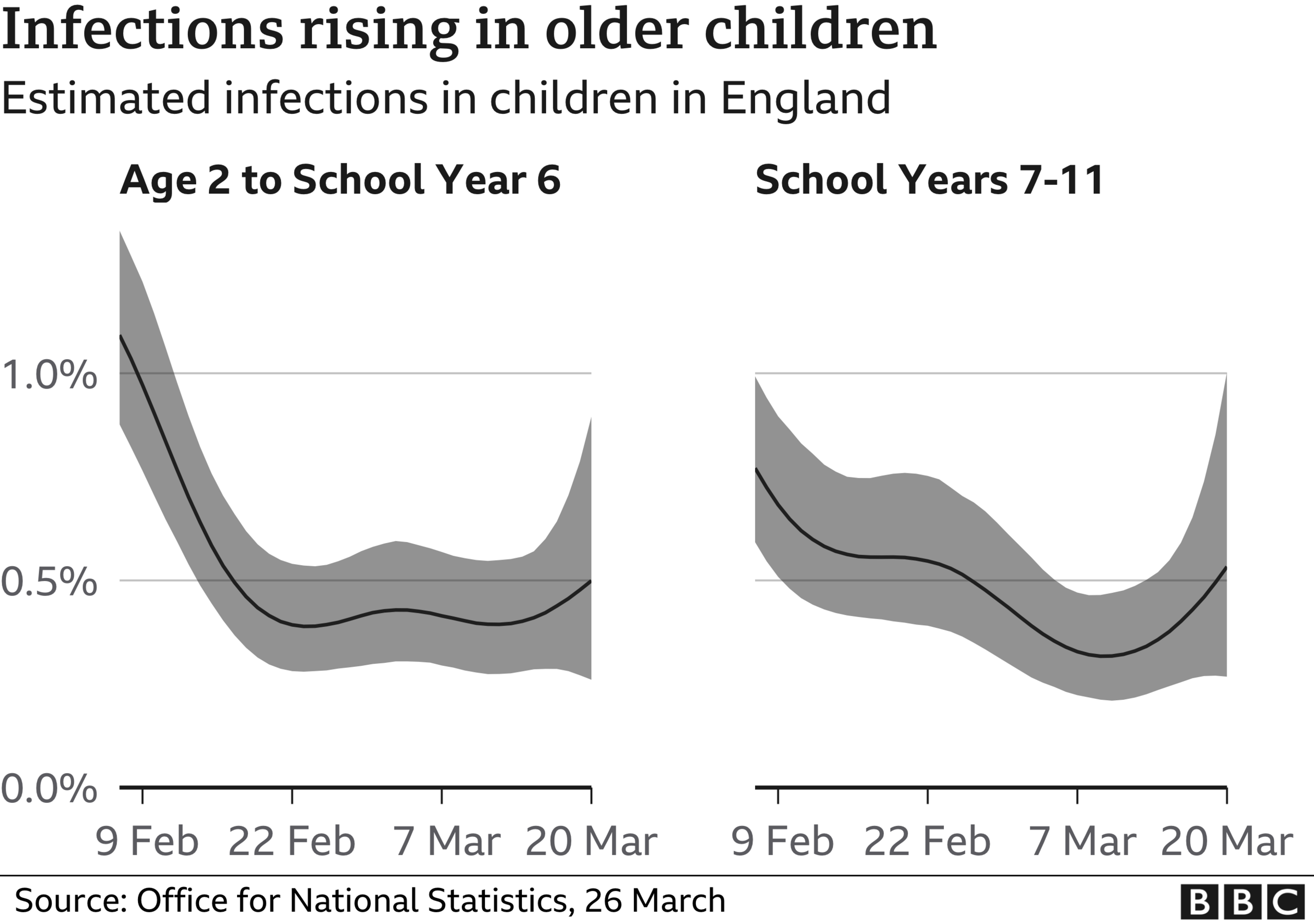
However, in primary schools the trend among younger children is less certain and much flatter, and in children in year 12 and upwards, the ONS estimates that infections fell.
Young people in their 20s and 30s also saw infections fall during that week.
Schools in Scotland opened to the youngest pupils at the end of February and ONS data has already suggested infections could be gradually rising there. Schools in Wales opened to some children on 22 February.
But identifying more infections in schools, which is possible through regular rapid testing, does not automatically mean there will be more cases and more serious illness across all age groups - because of the Covid vaccination programme.
More than half of the UK's adult population has now had one dose of a vaccine, which 'real-world' studies have shown to offer high levels of protection against Covid-19.
As a result, deaths as well as hospital admissions with Covid have fallen sharply, and particularly in older age groups which were vaccinated first. Millions of under-50s are yet to be offered a jab, however.
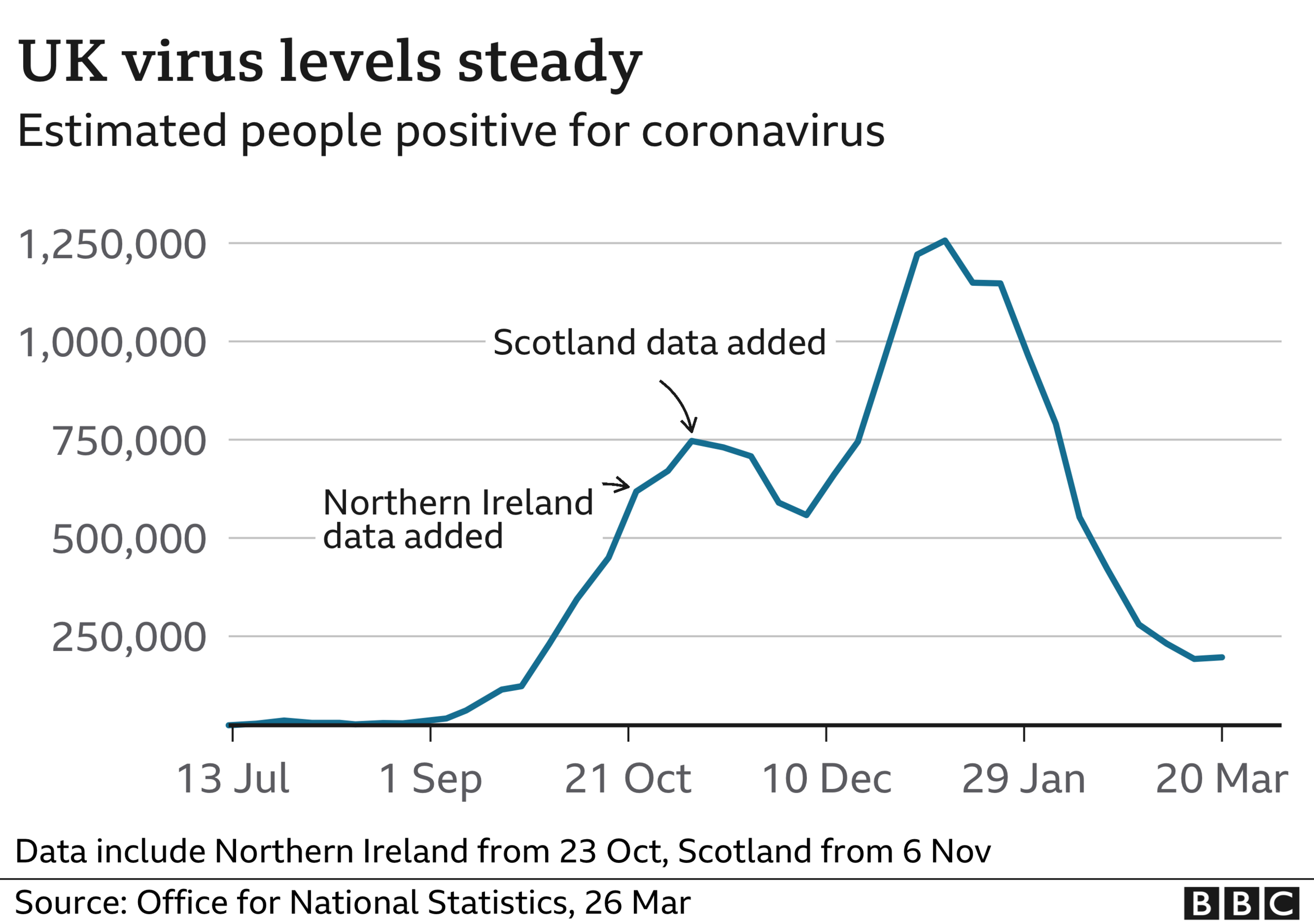
Prof James Naismith, director of the Rosalind Franklin Institute, at the University of Oxford, said caution was still needed.
"Even in a full-blown third wave, the number of hospitalisation and deaths for every thousand people who become infected would be much lower because of vaccination.
"However, no one who has not been vaccinated is entirely safe from serious illness and a large wave of infection in young people will lead to hospitalisations," he said.
Prof Lawrence Young, professor of molecular oncology at Warwick Medical School, said infections levelling off was "inevitable" as the country relaxes restrictions after lockdown.
"This is why the roadmap is taking a cautious approach - leaving gaps between each relaxation so that the impact on infections can be carefully monitored," he said.
The R number, external is now between 0.7 and 0.9, narrowing slightly from last week's estimate, but still below 1 in most regions. However, the government says the figure does not yet fully reflect the re-opening of schools in England.
Sarah Crofts, senior statistician for the ONS's Covid-19 Infection Survey, said their study found different trends in infections across regions.
"The North West saw an increase in the percentage of people testing positive while in the South East and East of England it decreased. There were slower decreases in London, West Midlands and the South West."
She said the ONS would continue to closely monitor infections by age group.

LAST DAYS BEFORE LOCKDOWN: 5 live asks listeners how they spent their last few days before the UK's first lockdown
MENTAL HEALTH IN COVID: Giving you the tools to look after your mental health during the pandemic

- Published7 March 2021
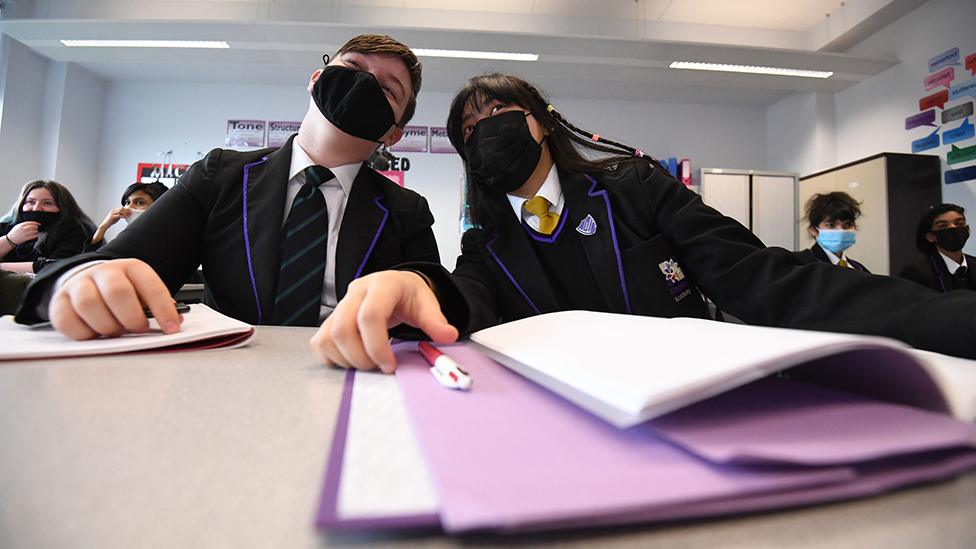
- Published1 March 2021

- Published2 March 2021
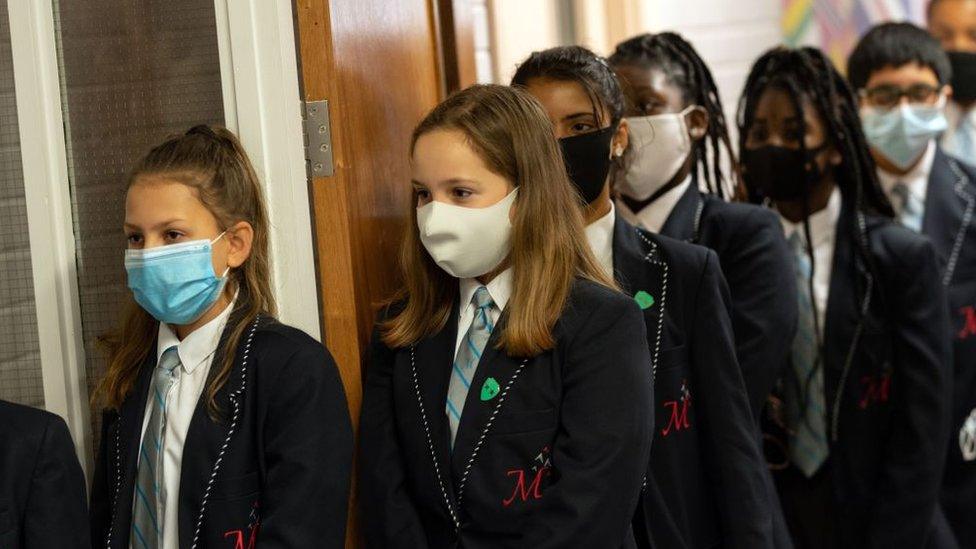
- Published15 February 2021
